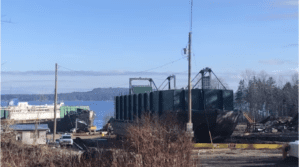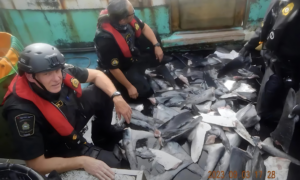
Europe, like Canada, has been struggling to address declines in fish stocks linked to overfishing and habitat destruction by bottom trawling. Now, Sweden and Greece have become the first countries in the EU to ban bottom trawling.
In April, Greece announced that it would ban bottom trawls in its marine protected areas (MPAs), which came after the UK committed to banning bottom trawling in 13 of its MPAs. Sweden, however, just took it a step further by banning this fishing method in all of its territorial waters.
Bottom trawling–in which a vast net is dragged over the ocean floor behind a trawler–has been identified by scientists around the world as a harmful method that can permanently damage ecosystems, release carbon into the ocean, and contribute significantly to overfishing. As well as damaging the ocean floor, the method is indiscriminate: bottom trawls catch almost everything in the way of their nets, including non-target species, such as juvenile fish, dolphins, and endangered whales. This so-called bycatch usually ends up dead, and the unwanted animals are discarded as waste.
The European Commission called on its member states to phase out bottom trawling in marine protected areas by 2030. However, a 2023 survey by Oceana found that bottom trawling was still widespread in 90% of MPAs in Europe.

On 16 April, Greece became the first EU country to take the plunge and ban bottom trawling. Greece’s ban will be applied in all national marine parks by 2026 and then later expanded to all its MPAs by 2030.
This move by Sweden is an encouraging one to NGOs working in the region, as Sweden is one of Europe’s major fishing powers. As the biggest Scandinavian country by population, Sweden has 127 trawlers conducting bottom trawling in 11% of its 2,179 marine protected areas.
Environment Minister Romina Pourmokhtari said that she hopes this ban will lead to the recovery of fish stocks in the region.
Like Canada, Sweden is facing challenges with many commercially important fish stocks, including cod, herring, and salmon. Eastern Baltic cod has been classified as critically endangered, and herring stocks have witnessed a decline of more than 50% since the 1970s. Overfishing has been identified as the primary cause of these declines.
The commercial fishing industry is unhappy. The European Bottom Fisheries Alliance (EBFA) condemned the ban of what it called a “perfectly regulated” practice.
For more information on this story, check out this article.




